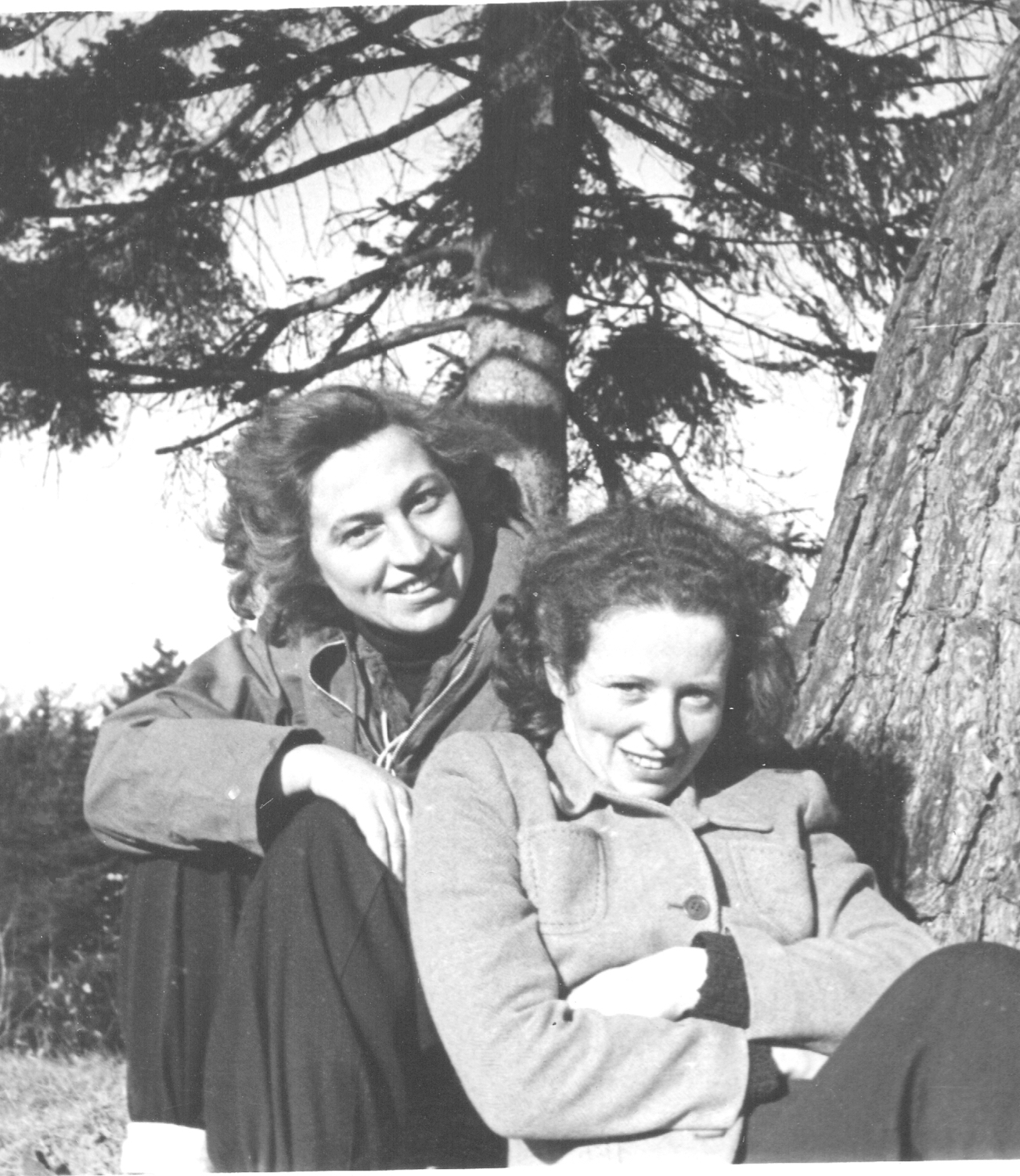Hilde Zimmermann, née Wundsam
12.09.1920 (Vienna) – 25.03.2002 (Vienna) Sculptor, designer Ravensbrück: 28. August 1944 – 28. April 1945, together with her mother Anna Wundsam

Hilde Zimmermann (links) mit ihrer Freundin Juci Fürst, ca. 1949, Foto: privat
Mother and father were active members of the SPÖ. Hilde sometimes accompanied her mother, Anna Wundsam, to political meetings. She participated in the "Kinderfreunde" and later in the "Rote Falken".
The year 1934 marked a turning point in the family's life. The City of Vienna recognizes this event today on an honor table in front of the town hall as follows: “On February 12, 1934, workers in Austria were the first in Europe to courageously oppose fascism. They fought for freedom, democracy and a republic. On March 4, 1933, the Dollfuss government shut down the parliament and ruled on the basis of a law from the time of the First World War. That meant: restrictions on freedom of the press and assembly, a ban on strikes, the reintroduction of the death penalty and others. From February 12 to 15, 1934, between 10,000 and 20,000 workers faced a superior force consisting of gendarmerie and police, armed forces and home guards. The struggles were largely confined to the workers' districts of Vienna and the Upper Austrian and Styrian industrial centers. After a nationwide general strike failed to materialize and artillery and mine launchers were used against community buildings, the uprising collapsed. A total of more than 350 people lost their lives in the fighting. 9 fighters of the Republican Protection Association were executed under professional law. ... "
The father belonged to the Schutzbund, the mother supplied streetcars. Both were jailed for months. Hilde and her brother Othmar were left alone, but soon received support from Red Aid and Quaker members. These events and the subsequent help shaped the siblings for their lives. Both were involved in the resistance against the occupation of Austria by fascist Germany, then against the war.
When a shelter was sought for a parachutist who was supposed to support the resistance in Austria, the mother and daughter agreed to do so. In March 1944, both were betrayed by an informer and arrested for "favoring enemy parachute agents". Even the brother, Othmar Wundsam who happened to have furlough, was arrested. The Roßauer Lände prison followed.
Mother and daughter came to Ravensbrück on August 28, 1944.
On April 28, 1945, mother and daughter were forced on a death march. The escape was successful together with friends. On May 1, they returned to the camp, which had since been liberated. Here they looked after the sick prisoner women who were left behind.
On July 17, 1945, they traveled home on a bus that Rosa Jochmann had previously provided in Vienna and with which she returned to Ravensbrück to pick up her approximately 60 comrades.
In Vienna both were active members of the Austrian camp community (ÖLGR). Hilde Zimmermann was a member of the Extended Committee from 1961 to 1982. From 1956 to 1959 she was instrumental in the content and artistic design of the rooms of the Austrian survivors in the former bunker of the Ravensbrück Memorial. As a member of the preparatory committee, she was responsible for the selection of topics and documents and, together with the architect Margarethe (Grete) Schütte-Lihotzky, who had been active in the resistance too, took care of the artistic design of the exhibition.
In 1985, the exhibition had been destroyed due to floods, Hilde Zimmermann led the working group of the content design, while the architect Prof. Ernst Fuhrherr was responsible for the graphic design. The restored exhibition opened on September 19, 1986.
Sources: Brigitte Halbmayr: „Die erste Prägung war also: Kein Krieg!“ – Hilde Zimmermann (geb. Wundsam) in: Helga Amesberger / Brigitte Halbmayr (Hg): „Vom Leben und Überleben – Wege nach Ravensbrück. Das Frauenkonzentrationslager in der Erinnerung“, Band 2 – Lebensgeschichten, 2001 Promedia, Wien, S. 257-263, ISBN 3-85371-176-6 Interviews mit Hilde Zimmermann, 1999 geführt von Brigitte Halbmayr im Rahmen des Projektes „Wege nach Ravensbrück“ des Instituts für Konfliktforschung, Wien, sind Teil des Videoarchivs Ravensbrück, www.videoarchiv.ravensbrueck.at